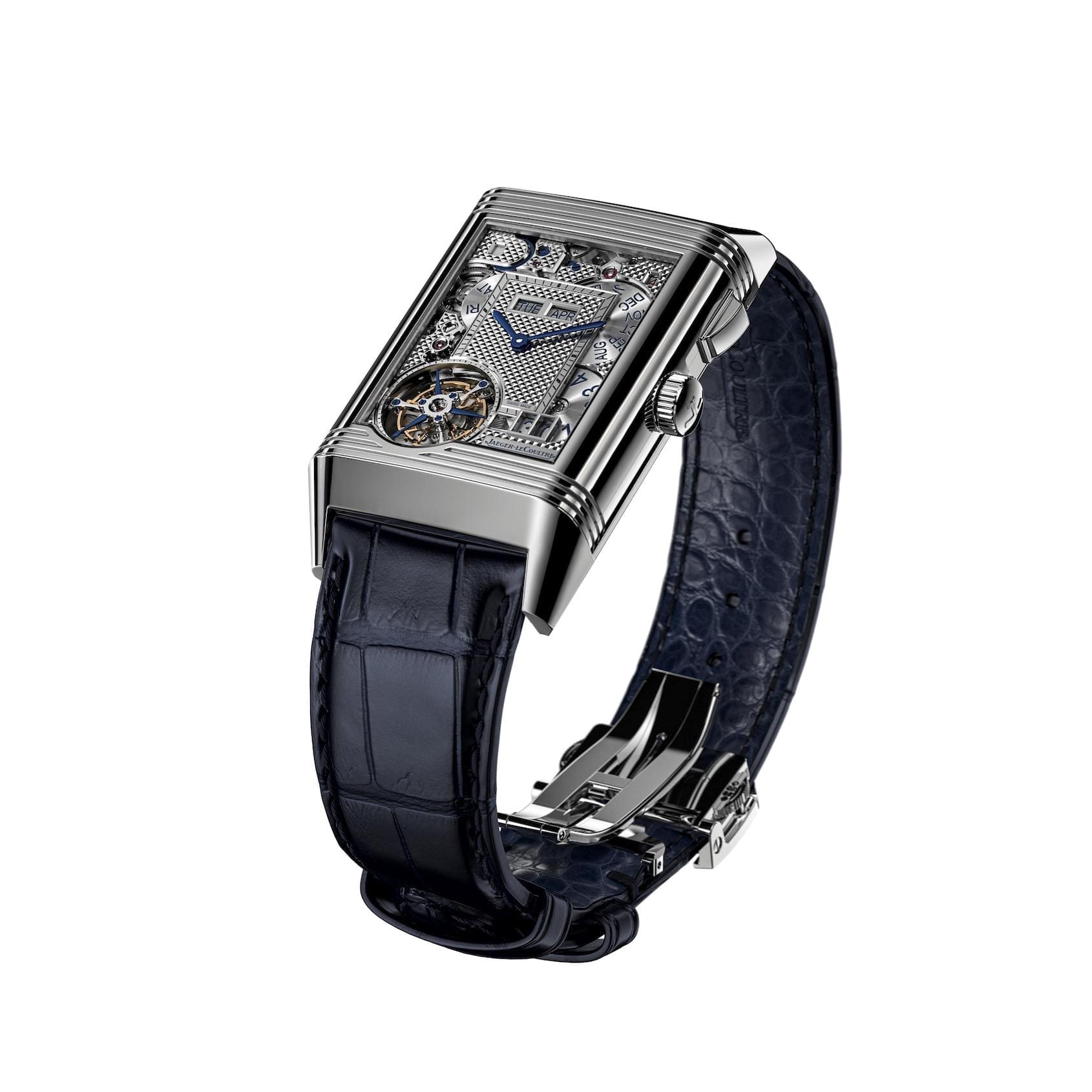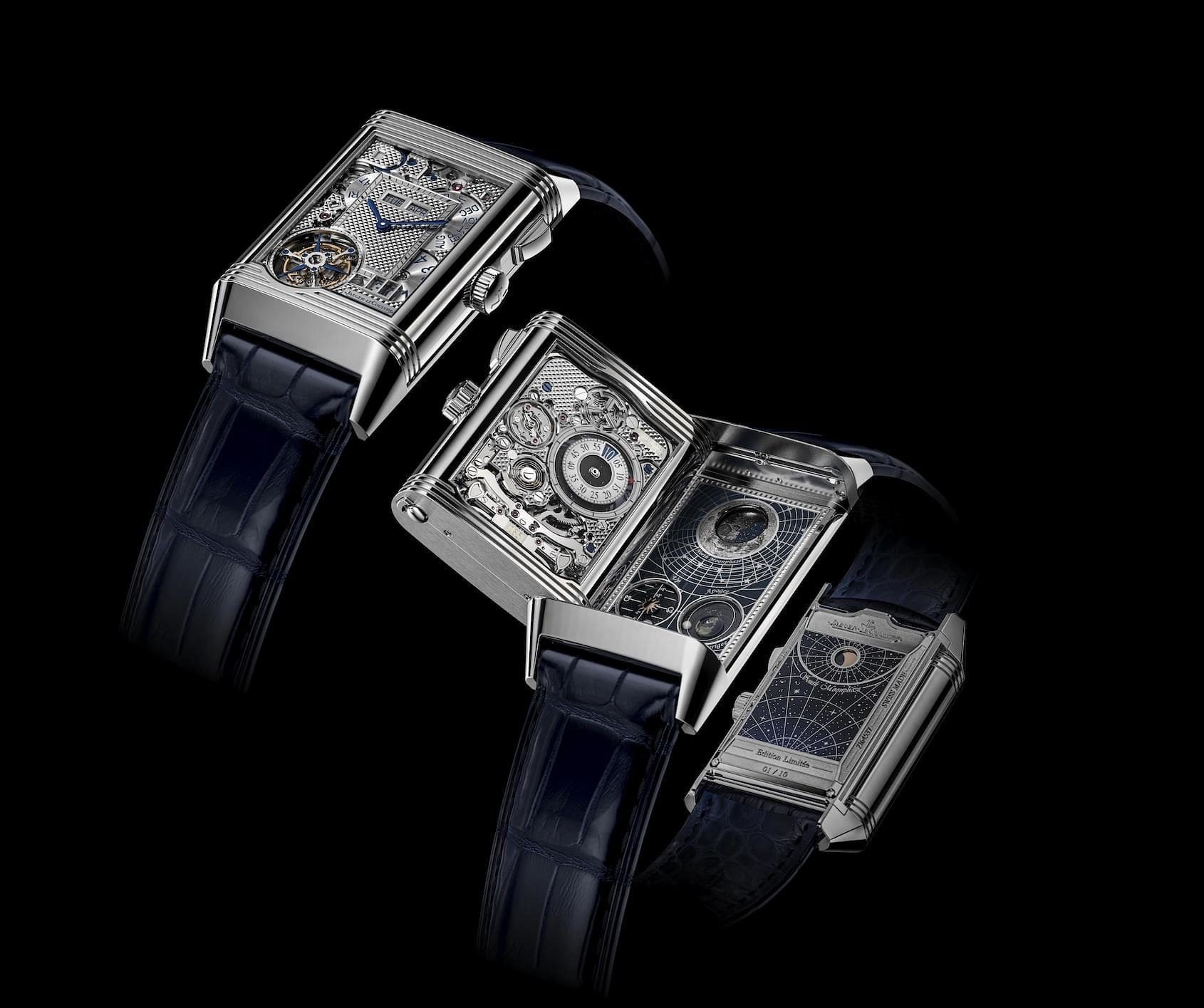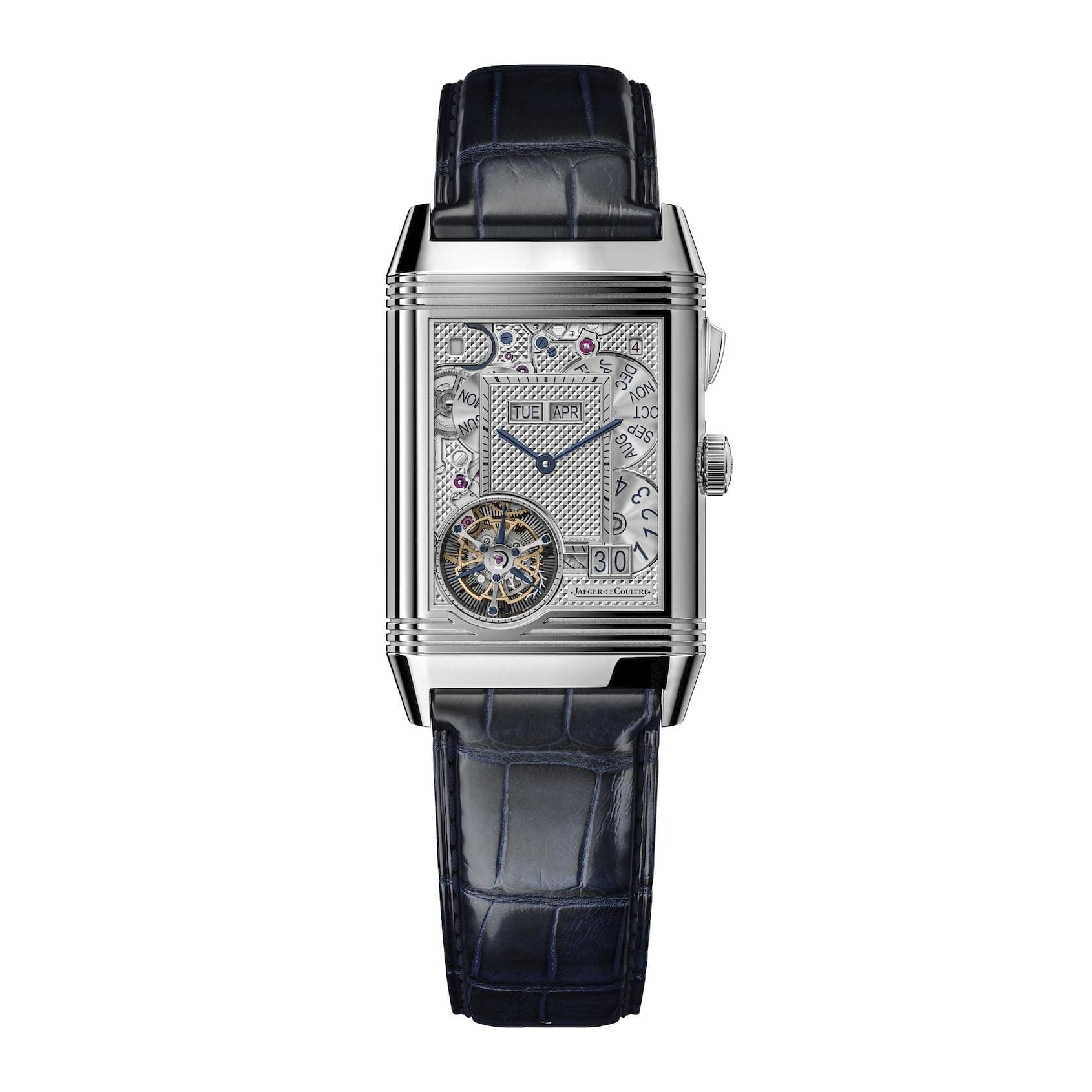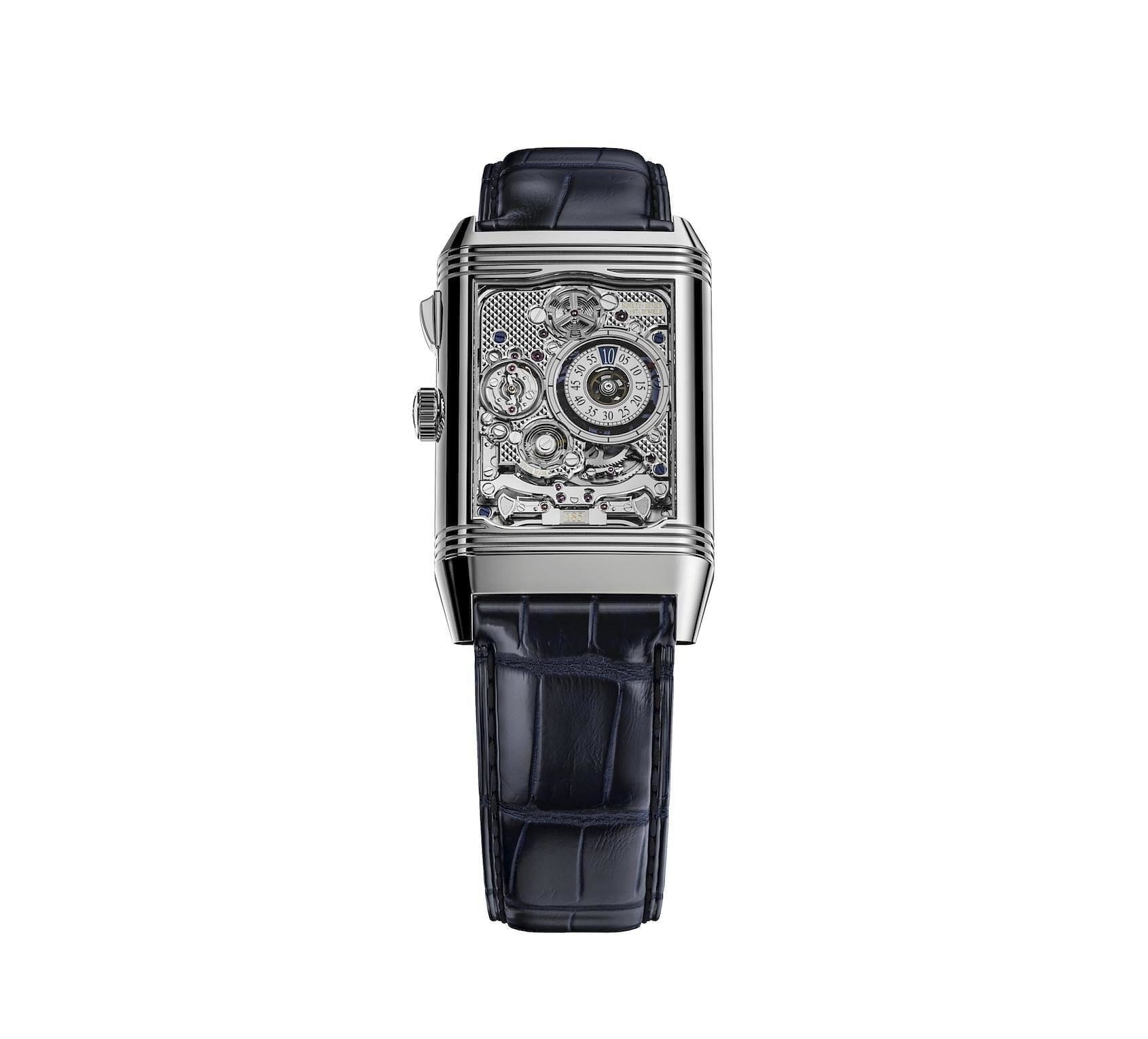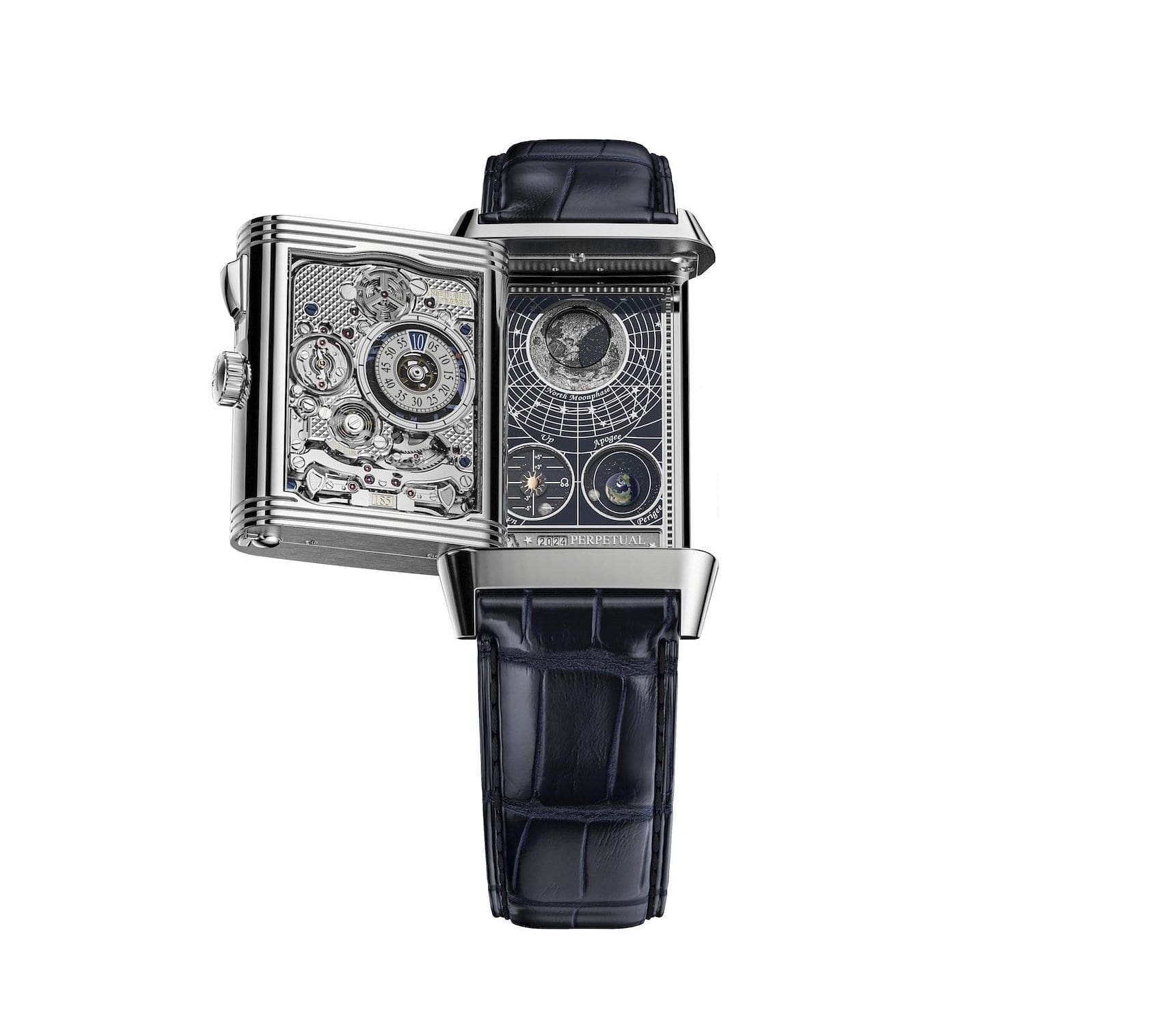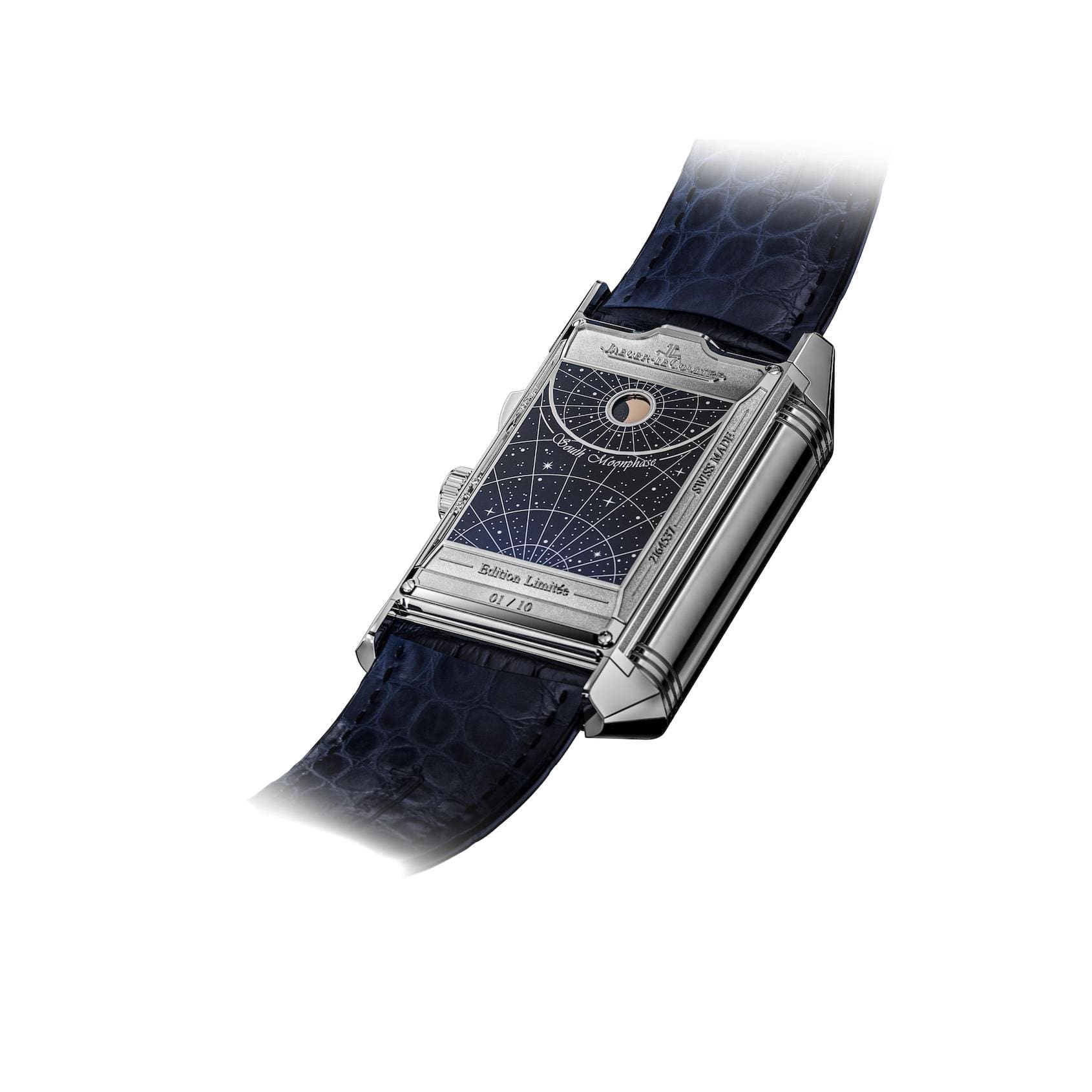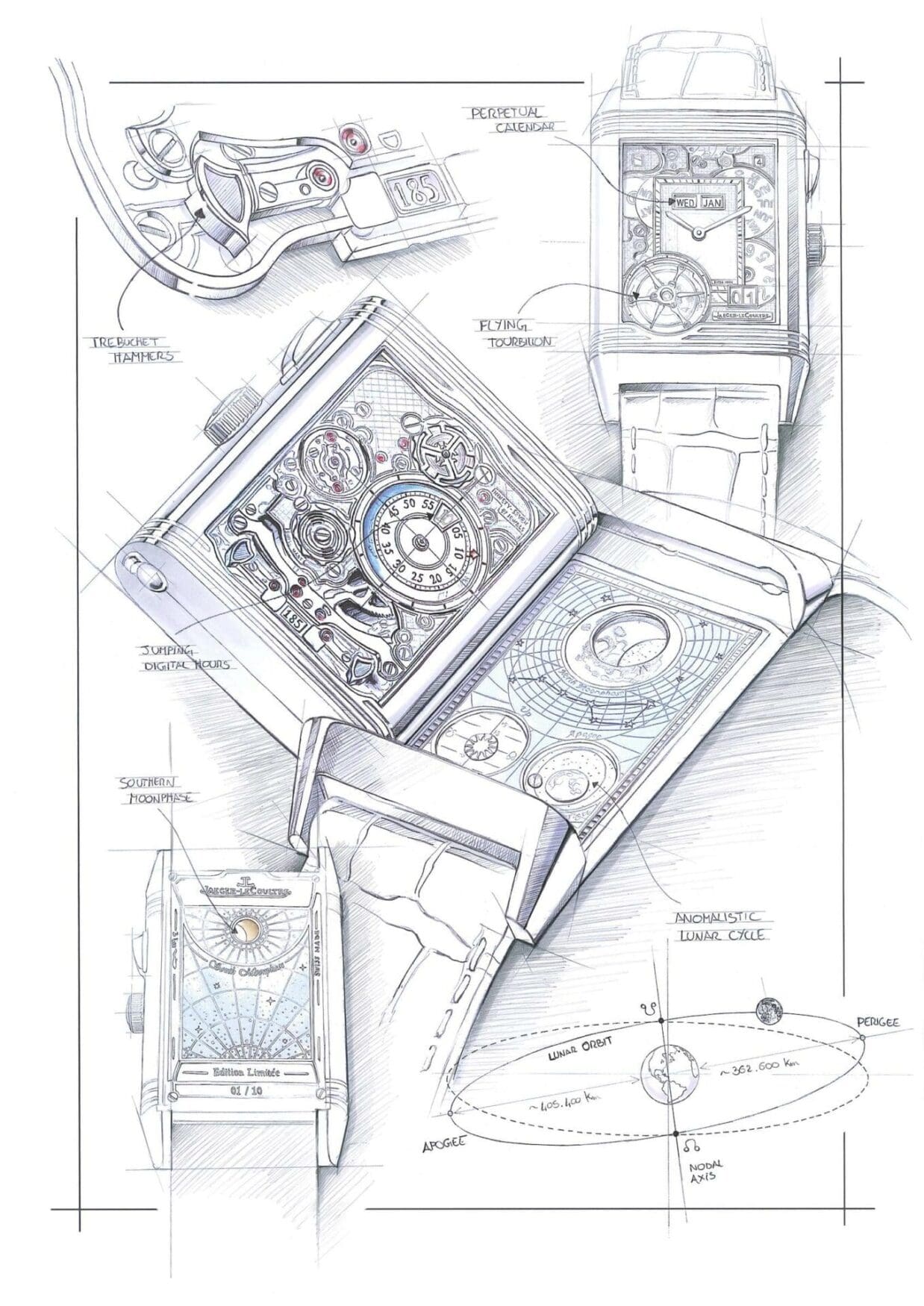Why I was wrong about the Jaeger-LeCoultre Reverso Hybris Mechanica Calibre 185 (Quadriptyque)
Luke BenedictusFlicking through the Guinness Book of Records, some achievements leave you furrow-browed with a mix of bewilderment and awe. Whether it’s the “most T-shirts removed while heading a football” (21) or “the world’s tallest hat” (4.8 metres), there’s no denying these are remarkable accomplishments. But while the dedication of such record breakers is beyond reasonable doubt, it’s hard not to question the underlying point of such endeavours. More specifically, is simply pushing the boundaries a worthwhile end in itself? Or does the question of utility (or the conspicuous lack thereof) determine a deed’s ultimate value?
Such questions spring to mind with the release of the Jaeger-LeCoultre Reverso Hybris Mechanica Calibre 185 Quadriptyque. That convoluted mouthful of a name gives you some idea of the technical intricacy within. Perhaps the best way to convey this wizardry is to consider the basic numbers. Taking over six years to make, the Quadriptyque is the first-ever watch ever to have four functional dials, and required 12 new patents in its development. Just 10 pieces of the watch will be made, each one costing more than $2 million AUD.
Hybris Mechanica, you see, is Jaeger-LeCoultre’s elite collection designed to reflect the pinnacle of the brand’s craftsmanship and artistry. “We have a team of over 40 people whose job it is to work on innovation, on research, on bringing always a new standard,” explains CEO Catherine Rénier. “We strive for really moving forward in terms of our watchmaking expertise.”
This year marks the 90th anniversary of the Reverso, the iconic, rectangular watch with a reversible case that was originally designed to be flipped over to protect your watch dial while playing polo. The Hybris Mechanica boffins therefore turned their attention to giving the birthday boy a spectacular upgrade.
What they’ve achieved does not easily lend itself to a pithy summary. The first watch face features an instantaneous perpetual calendar (meaning it will precisely advance at midnight each evening), a Grande Date complication with separate apertures for the day, month and year, plus a flying tourbillon in the bottom left quadrant of the dial. In other words, we’re already in the most vertiginous echelons of haute horology.
A simple slide and flip of the case cradle reveals the second dial. This tells the time in a different mechanical format via a jumping digital hour and a red arrow minute indicator. Dial two also showcases JLC’s expertise with sound in the form of a minute repeater. This complication expresses the time via audible chimes as tiny hammers strike a miniature gong to convey the hours, quarter hours, and minutes in turn. In a further display of one-upmanship, JLC have devised a unique system that minimises the silence between chiming intervals in order to reduce any dead time. Life is short and you’re busy, after all.
The third “dial” is situated on the inside of the case cradle and it’s here that things get cosmic (man). This shows a northern hemisphere moon phase, while also revealing the draconic lunar cycle (the height of the moon’s orbit) and the anomalistic lunar cycle (the position of the extreme points of the moon’s orbit). This is the first time in mechanical horology that these multiple cycles have been displayed in a single watch. Furthermore, while conventional displays of the moon phase develop a one-day margin of error after 32.5 months, the Quadriptyque’s display requires only one adjustment every 1,111 years, making it the ideal watch for lazy astronomers.
The final dial makes up the back of the case cradle. This depicts the Southern Hemisphere moon phase with a star-flecked sky chart that forms the backdrop to the pink-gold moon phase indicator.
Yet perhaps the most impressive aspect of the Quadriptyque is the execution. All that technical complexity is delivered in a package that still preserves the Reverso’s Art Deco soul. The white gold case is 31mm in diameter, 15.15mm thick, and 51.2mm lug-to-lug across the wrist – remarkably compact dimensions given all that’s going inside. The movement is also beautifully decorated with almost every surface covered with a Clous de Paris guilloche motif. In short, it’s one hell of a watch.
And yet, I confess that my first impression of the Quadriptyque reminded me of standing at a gig and listening to an overlong guitar solo. Sure, it’s all very impressive. But after a certain amount of improvised noodling, it can start to feel like a demonstration of technical virtuosity for its own sake.
Renier argues that such an assessment entirely misses the point. “The research, the work that is done for a piece like this, will fuel the creativity of the maison in other pieces,” she says. “It is like a concept car. You take it to the extreme and then, everything that comes from this learning becomes a development of your watchmakers’ skills. A piece like this is really an important way of Jaeger-LeCoultre continuously renewing ourself and moving forward.”
Admittedly, if the Quadriptyque is a heavy-handed flex of JLC’s horological muscle then it’s also a reminder of the brand’s capabilities. The history of Jaeger-LeCoultre is, after all, rooted in elite movement manufacture, with Patek Philippe, Audemars Piguet, and Vacheron Constantin all using JLC’s ebauches at different times. Technical innovation has always been central to the Jaeger-LeCoultre brand – the Quadriptyque is a modern expression of that sentiment.
“This is exactly what our founder was about,” Renier explains. “The beginning of Jaeger-LeCoultre was not a watchmaker history, it was an inventor history. It really set out to achieve ultimate precision and that led to watchmaking construction and caliber expertise. But the inventor spirit is the foundation.”
In other words, the Quadriptyque is not about breaking records or anything so yawningly prosaic as utility. It’s more a symbol of Jaeger-LeCoultre’s brand values – that’ll also keep you bang up to date with the vacillations of the anomalistic lunar cycle.




